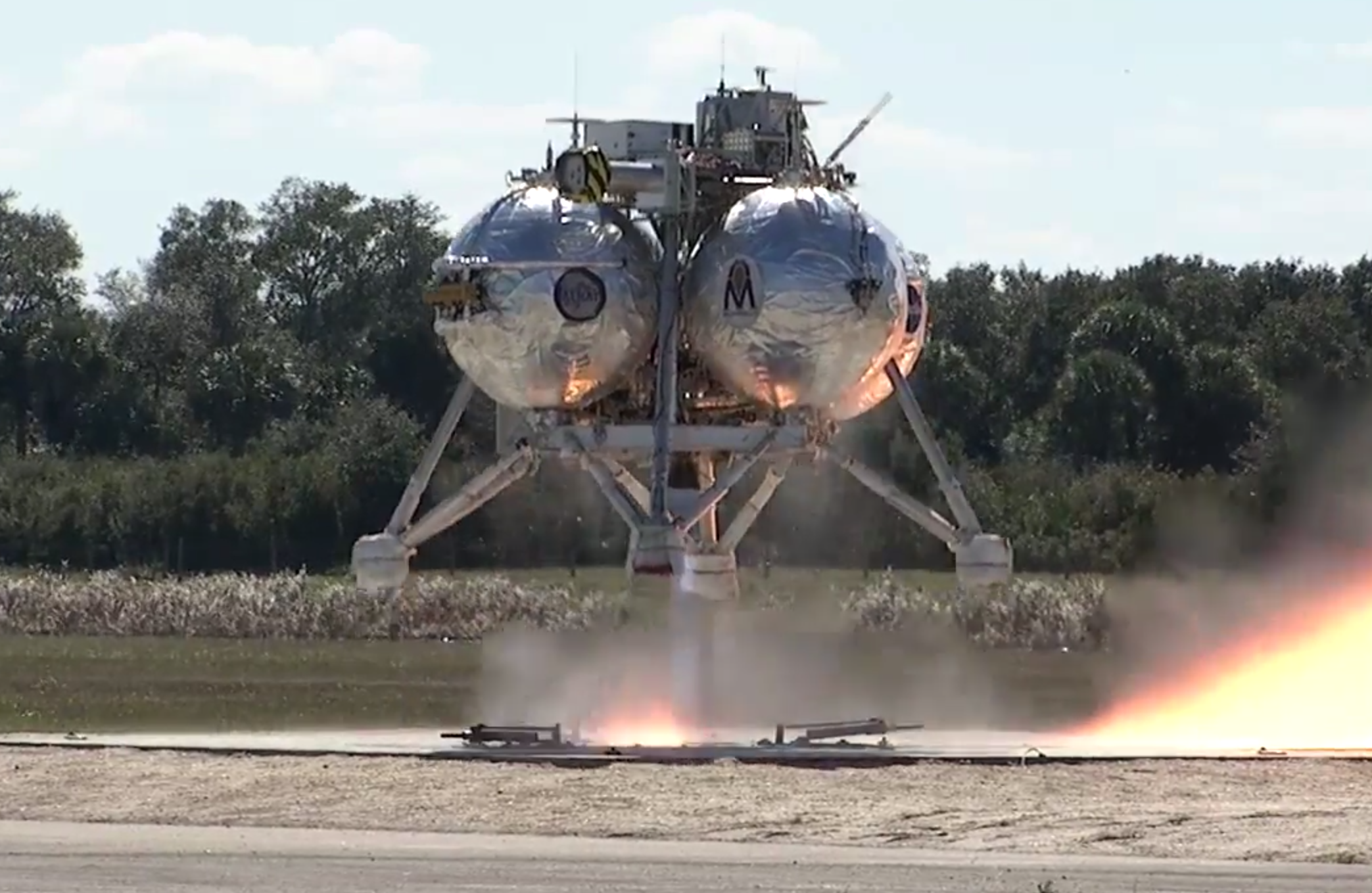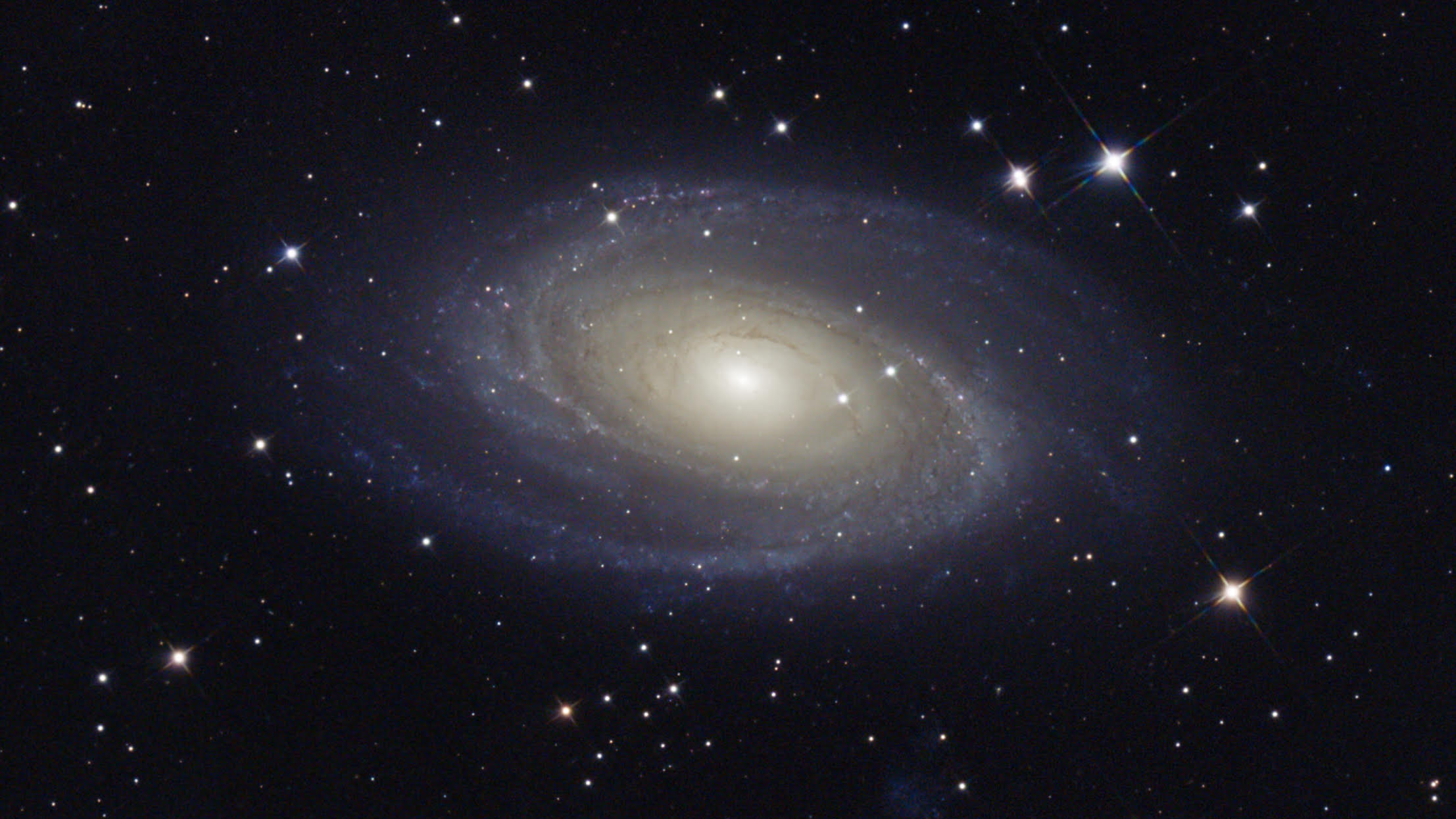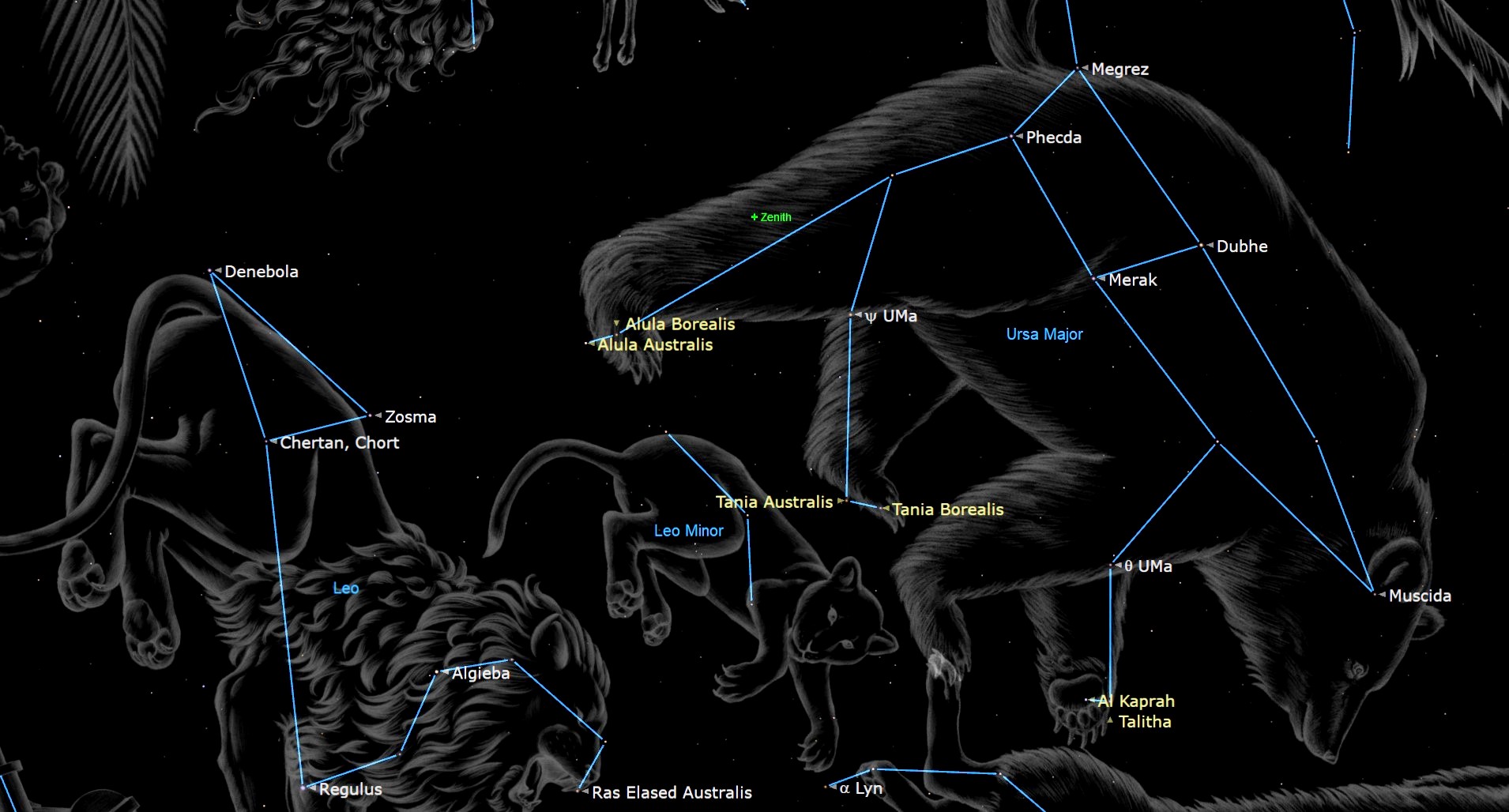NASA's Robotic Lander Morpheus Soars in Test Flight (Video)
NASA's next robotic moon lander Morpheus successfully completed its fifth free-flight test this week.
Video of the Morpheus test flight shows the SUV-sized prototype taking off vertically on Feb. 10, 2014 at NASA Kennedy Space Center's Shuttle Landing Facility in Florida.
The 74-second trial run took the Morpheus lander prototype 467 feet (142 meters) above the ground, soaring more than 160 feet (48 meters) higher than its last test, according to NASA. The experimental lander then flew forward 637 feet (194 m) in 30 seconds before descending and landing on target.
"The vehicle flew its pre-planned trajectory flawlessly, reaching a max ascent velocity of 13 m/s [42 feet/s], and landing with no appreciable deviation from its intended target," NASA officials said in a video description of the test posted online.

The Morpheus lander uses liquid oxygen and methane, or so-called green propellants. NASA officials say these fuels are safer and cheaper to use than traditional rocket propellants and can be stored in space for longer periods.
Morpheus could deliver about a 1,100-lb. (500 kilograms) payload to the moon, NASA officials say. Modifications to its landing system could even be used to help a spacecraft deliver cargo to other planetary bodies, such as an asteroid in deep space.
NASA officials said there is one more test flight planned for Morpheus before the automated landing and hazard avoidance technology (ALHAT) is installed on the vehicle. ALHAT will use lasers to scan the surface of a potential landing site for hazards, such as a dangerous boulder or crater.
Get the Space.com Newsletter
Breaking space news, the latest updates on rocket launches, skywatching events and more!
Follow Megan Gannon on Twitter and Google+. Follow us @SPACEdotcom, Facebook or Google+. Originally published on Space.com.
Join our Space Forums to keep talking space on the latest missions, night sky and more! And if you have a news tip, correction or comment, let us know at: community@space.com.

Megan has been writing for Live Science and Space.com since 2012. Her interests range from archaeology to space exploration, and she has a bachelor's degree in English and art history from New York University. Megan spent two years as a reporter on the national desk at NewsCore. She has watched dinosaur auctions, witnessed rocket launches, licked ancient pottery sherds in Cyprus and flown in zero gravity on a Zero Gravity Corp. to follow students sparking weightless fires for science. Follow her on Twitter for her latest project.









